Beginner’s Guide: George Miller, Writer & Director

Few directors have a filmography quite as unique and unexpected as George Miller. Born in Australia in 1945, Miller originally started as a doctor, where he became eerily fascinated by shocking, if not downright gruesome, effects of a car crash on the human body. That curiosity would blossom into his first picture, Mad Max in 1979, eventually sparking his reputation as one of cinema’s premier action filmmakers.
But, a broader look at Miller’s filmography reveals an artist who’s work extends beyond the confines of the Mad Max universe. There are family films, a prestige drama, and even a screwball sex-comedy. What connects them all is Miller’s sense of playfulness. Watching one of his movies is like seeing a ringmaster at work in an elaborate circus. Outside of Spielberg, few other working filmmakers have Miller’s sheer command over setpieces, brought upon by his masterful understanding of geography.
Geography, after all, is what separates good action sequences from great ones, the kind that makes you leap out of your seat and reignite your love for cinema. With expressionistic camerawork and an eye for striking visual moments, Miller’s a filmmaker with the power to create moments that will be ingrained in your mind forever.
So, with theaters still not open, and the recent 5th anniversary of his action masterpiece Mad Max: Fury Road, let’s take a look at the filmography of George Miller!
Mad Max (1979)
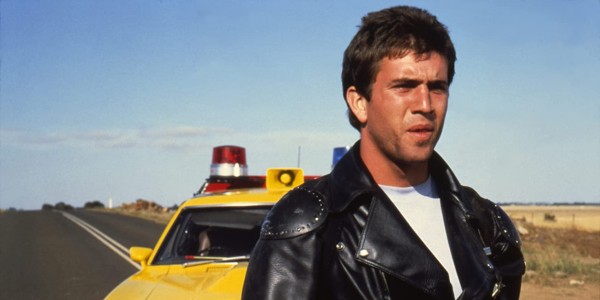
One is likely to find themselves slightly thrown-off watching Miller’s first high-speed action picture, if only for its differing world from the rest of the Mad Max pictures. The series has become synonymous with its desert wasteland of ramshackle vehicles, campy costumes, and mythically large characters. It’s a world where civilization has collapsed, with the remaining pieces recontextualized into something primal and savage.
But, the wasteland that’s defined the series is nowhere to be found in its first installment. Yes, the roads and highways of the outback are filled with murderous gangs and lawless criminals, but there remains a system of justice. The world is dystopian, maybe, but closer in DNA to the reality of our society than the installments that would follow. Mad Max’s narrative follows more closely the beats of police-thrillers or biker-gang pictures than sci-fi spectacle.
The Max we see here, played by a boyish Mel Gibson, is not the lone, silent wanderer of the more iconic sequels. He’s a hot-shot lawman who seeks to leave his increasingly dangerous job behind until evil catches up to him and his family. Like Sam Raimi’s original Evil Dead picture, Mad Max is probably best experienced as a trial run for what would come later. Part of the enjoyment comes in their grimy, low-budget, grindhouse aesthetic, but they mostly feel like a first draft for an arguably more iconic and influential sequel.
Just as Raimi realized the dark, almost slapstick elements of his first Evil Dead movie were the most effective bits to embrace in a sequel, so did Miller with his impressively staged car-chases.
Mad Max 2: The Road Warrior (1981)

If Mad Max showcased Miller’s incredible gift at crafting exhilarating action sequences, albeit, in a somewhat familiar police-drama, Road Warrior would allow him to elevate those sequences with a sense of imagination and spectacle. Miller once again thrills and delights with his propulsive, kinetic filmmaking, but here the images feel instantly iconic in their staging and framing.
The lawlessness and viscera that made individual scenes in Mad Max so electrifying now extend to the entire picture, as Road Warrior turns the Australian outback into an arena of apocalyptic mayhem. It’s grand, and gonzo in only the movies can be. Gibson here is decidedly more rugged, now fueled only by survival rather than the law, or even vengeance. After all, the heroism of Road Warrior is not merely men fighting to retain order in an increasingly violent world but moments of humanity existing in a world that has digressed down to its most primal form.
Twilight Zone: The Movie (1983)
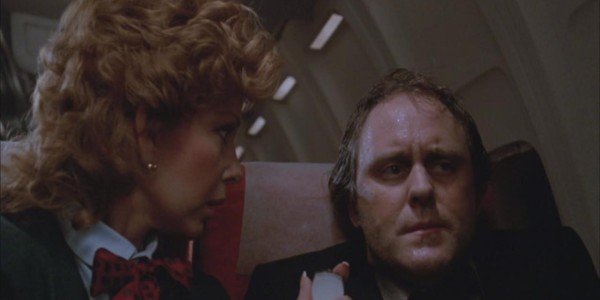
Shrouded in tragedy, Twilight Zone: The Movie holds a grim place in the halls of film history, mostly unhelped by its status as an underwhelming work of pop-entertainment. The pitch at its center – bring four filmmakers in to put their spin on a classic Twilight Zone episode – is a titillating one for an anthology picture. However, despite the involvement of 80s darlings such as John Landis, Joe Dante, and even Steven Spielberg, the movie never entirely comes alive, fusing far-out fears and poignant commentary as only the best Twilight Zone episodes can do.
Instead, the whole thing feels lethargic; a sleepwalk through familiar beats in hopes of generating a warm nostalgic response — Not at all what one expected from the Rod Sterling masterwork. Yet Miller’s installment, a remake of the episode “Nightmare at 20,000 Feet,” is the one section of the film that just clicks. With his aggressive angles and fast camera movements, Miller gives the classic tale of terror onboard an air-craft an extra jolt of anxiety. Unlike the other installments, Miller’s is less uninspired retread and more electrifying power-up, letting him trust in the material enough to squeeze every moment for maximum mayhem.
Mad Max Beyond Thunderdome (1985)
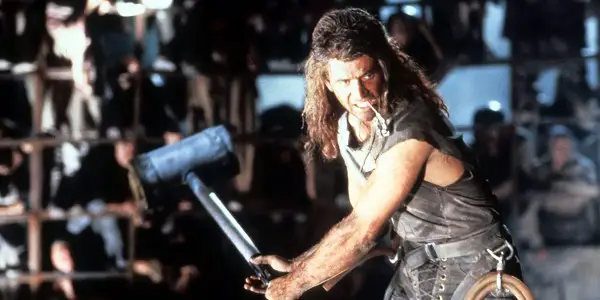
With the financial success of Road Warrior, there was increasing pressure for Miller to once again return to his apocalyptic wasteland. With a larger scale than the previous two Mad Max installments, the movie allowed Miller to indulge in his uniquely weird worldbuilding.
In Road Warrior, Miller’s striking iconography was infused with a rich sense of history and consideration for every object in the frame. Other than Star Wars, there arguably isn’t another picture that more confidently crafts a wholly original world for its audience on-screen. And, just as George Lucas would become more obsessed with the minutiae of his fictional worlds, so does Miller with Thunderdome. As the movie washes over you, you’re flooded with immense detail and imaginative wonder through every set design and article of clothing.
Yet, while Thunderdome lets Miller probe further into his imagination, one can’t help but feel the picture is a watered-down version of the Mad Max experience, trading the visceral mayhem of the first two movies for the swashbuckling adventure of Indiana Jones. Add in a villainous Tina Turner, a gladiatorial fighting ring, and a tribe of warrior children straight out of Lord of the Flies, and you have a picture that feels equal parts disjointed and campy.
The Witches of Eastwick (1987)
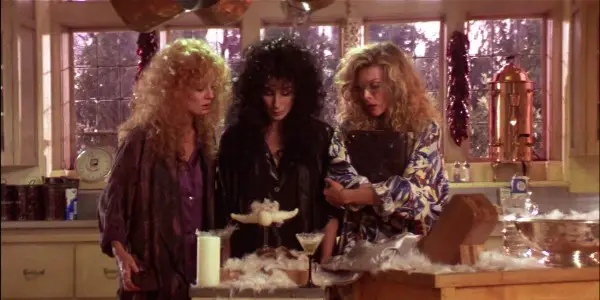
Leaving the wasteland of the Mad Max universe behind (at least temporarily), Miller embarked on his first major studio gig, one in which the Aussie auteur would have to deal with the constraints and notes of the Hollywood system, rather than his independent group of collaborators. By all accounts, the production of The Witches of Eastwick would become one of Miller’s most stressful experiences, with star Jack Nicholson even going as far as to shield him from much of the studio pressure and fighting for the director to achieve his vision.
Decades later, the film stands as a prime specimen for the kind of mid-budget studio comedy that Hollywood wouldn’t touch with a ten-foot pole anymore. Ugh, what a shame! What I wouldn’t give to have one of these every week, and that was true even before COVID-19. It’s a bizarre luxury these days to get a picture that just wants to entertain you, tossing aside any need to uphold any franchise obligations or strategically campaign for awards. Watching The Witches of Eastwick, you’re immediately struck by just how 80s it all is, not in a specific pop-culture or aesthetic way but the loose “I guess this could work,” attitude by which it’s all constructed.
Only that decade could produce something this unironically bizarre but have it all miraculously hold together by the sheer charm of its stars. I’m not sure I could ever buy Cher, Susan Sarandon, and Michelle Pfeiffer getting swept off their feet by Nicholson (at least not how he looks in this picture), but everyone in the movie embraces the absurdity. Miller sells you on the movie’s playful fantasy elements, but he’s wise enough to trust the stars to sell you on the screwball sex-comedy at the center.
Lorenzo’s Oil (1992)

On paper, it sounds like disposable Oscar-bait: two parents work tirelessly to find a cure for their son, who has been debilitated by a rare but deadly disease. However, there’s miraculously more to Lorenzo’s Oil than cheap, tear-jerky jabs at your emotional core.
Miller, a former doctor himself, is engaged in the material in a way most other filmmakers wouldn’t be. He isn’t afraid to charge head-first into long discussions filled with medical jargon or immerse you in the painstaking hours of research and trials needed to make breakthroughs. Miller trusts his actors (Susan Sarandon and Nick Nolte) to sell you on the emotional toll and exhaustion, even as one of them — cough cough, Nolte — is doing so behind a cartoonish Italian accent. And finally, he strategically understands when to deploy his mad-cap, operatic style, and when to restrain himself.
That makes the movie somewhat less-enthralling than his grander spectacles. However, it does offer maybe the only case of Miller engaging with the material through its screenplay rather than its technological construction. Like James Cameron or Robert Zemeckis, Miller’s been a filmmaker obsessed with the idea of using technology and effects as a means of storytelling. That’s partially why his movies are so visually expressive. Still, Lorenzo’s Oil offers a glimpse at an alternate path in his career, one interested in people and institutions rather than fantastical worlds.
Babe: Pig in the City (1998)
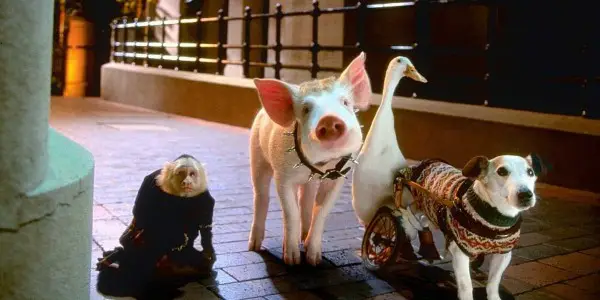
You remember Babe, right? The one about the talking pig with a knack for herding sheep that became one of 1995’s most critically acclaimed pictures, even securing multiple Oscar nominations? Miller had his eye on the project since the 80s but wanted to wait until technology had caught up to be able to bring all the various animal characters to life sufficiently. While Miller oversaw the acclaimed family film, he would pass directing duties to the film’s co-writer, Chris Noonan.
However, three years later, he would step in for the much loonier sequel that takes the Babe out of the barnyard and into the concrete jungle of the big city. Though not as warmly received upon its release as the original, Pig in the City has garnered itself a substantial cult following. Even Noah Baumbach praised the picture, playing it as a double feature along with Eyes Wide Shut about protagonists falling down the rabbit hole in a mysterious dream-like city.
But, there’s also a direct connection to be drawn between Pig in the City and the Mad Max franchise, with the former functioning almost as the family-friendly equivalent of the latter. Miller’s gift at incorporating tactile effects into fun, visually dynamic setpieces remains just as prevalent as ever, this time with various animals instead of deranged vehicles. The first Babe felt almost like an old folk tale brought to life. However, Pig in the Big City has zany, cartoonish energy to it, taking the story out of a familiar world and placing it in one of Miller’s playful imagination.
Happy Feet (2006)

Sometimes you just look back at the success of a movie and wonder, “What a strange time that was.” A year before Miller’s tap-dancing musical about horny (no, really, there’s a lot of sex talk in this movie) penguins, Warner Brothers was having tremendous success with the Morgan Freeman-narrated documentary March of the Penguins. As it turns out, America simply couldn’t get enough of the flightless birds from down south, eventually pushing Happy Feet to one of the highest-grossing pictures of 2006, while also earning an Academy Award for Best Animated Feature, Miller’s only Oscar win.
Close to 15 years later, Happy Feet doesn’t quite hold up as an animated classic, though it does provide another example of Miller’s technical wizardry and playful setpieces. There’s a great deal of care put into rendering the arctic tundra and make the penguins as life-like as possible but, similar to last year’s Lion King remake, the push for photorealism makes it hard to distinguish many of the characters from one another. It turns out; all penguins look the same. But, maybe, more importantly, the movie just feels unfocused, as if Miller started with a simple story of an outsider struggling to find acceptance in his community, and slowly changed his focus toward an environmental message but without entirely coherently connecting those two pieces.
And that brings us to….
Happy Feet Two (2011)

Coincidently, both Happy Feet movies come after periods of struggle for Miller, as multiple roadblocks went in the way of larger projects, whether they be a fourth Mad Max picture or even a crack at Justice League. Strange then that when the latter of those two projects fell apart, Warner Brothers reached out to say, “Hey, remember that penguin movie you did that made money? Why not try another?”
Sadly, America had all but moved on from its penguin fixation that made everyone flock to the theaters back in 2006. Which is a shame, because Happy Feet Two might in many ways be an improvement upon the original. Much of why Miller succeeds in sequels is understanding what worked the first time around and using a second picture as a way to hone-in on the most exciting ideas in a film, as well as enhancing its style with improvements in technology.
With Happy Feet Two, Miller feels alive and more confident in his use of the animation. The images feel less static; instead, they’re zooming, spinning, and gliding on screen. But, the environmental message also feels more precise and organically baked into the story, where it previously felt tacked on to the original. Plus, you know, there’s Brad Pitt and Matt Damon playing krill named Will and Bill, which might be one of the most surreal things I’ve ever witnessed in a movie.
Mad Max: Fury Road (2015)
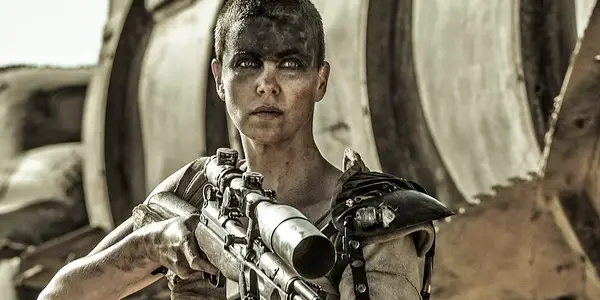
After ten years of failed attempts to return to the wasteland, Miller finally crafted what may be his magnum opus: a magnificent feat of action filmmaking that might be the purest form of cinema in the last twenty years. Fury Road is an amped-up, full-throttle, and explosive spectacle that feels like the crystallization of Miller’s Mad Max vision.
In goes Tom Hardy, in place of Gibson, whose take on Max is more Tasmanian devil than the latter’s stoic star-power. But, the attention grabber this time is Charlize Theron, who spiritually feels more aligned with Gibson’s Max in her ruggedness and stoicism. There’s a world of pain behind her eyes, but also a fearsome command of the screen that makes it feel as though the entire picture is orbiting around her. It’s an instantly iconic performance, one which places itself among the hall of great movie heroines, such as Ellen Ripley in Aliens or the Bride in Kill Bill. Oh, did I mention she has a robotic arm?
Fury Road is easily Miller at his apex. It’s a symphony of violence with him as the conductor, bringing forth sights and sounds that 99 percent of other mainstream action movies wouldn’t come close to even attempting. And by shifting his focus to the women of the wasteland, Miller also creates something unexpectedly political through who he provides power and agency toward, making it a surprisingly powerful work of feminist revisionism.
Conclusion: What’s next?
As of now, there are two projects by which Miller is circling, and yes, one of them is a Mad Max movie. Fury Road garnered an ecstatic enough reception, including six Oscar wins, reviving interest in the franchise.
However, this time, the focus is shifting entirely away from Max, adopting Charlize Theron’s character of Imperator Furiosa as the new franchise head. Yet, while fans may be running around the parking lot, screaming in joy at the thought of Theron reprising her iconic, Miller has other plans.
According to a recent interview with the New York Times, Miller will be searching for a young actress in her 20s to play a younger version of the character. But, before that search begins, he’ll be releasing the picture Three Thousand Years of Longing, starring Tilda Swinton and Idris Elba. Though not much is known about the movie, it’s been described as an “epic love story” by some reports…whatever that means.
Still, it’s exciting to hear Miller will be gracing our movie screens shortly. If going through his filmography teaches anything, it’s his adaptability and ability to bring the expressionistic style to almost any project.
What’s your favorite George Miller movie?
Does content like this matter to you?
Become a Member and support film journalism. Unlock access to all of Film Inquiry`s great articles. Join a community of like-minded readers who are passionate about cinema - get access to our private members Network, give back to independent filmmakers, and more.













